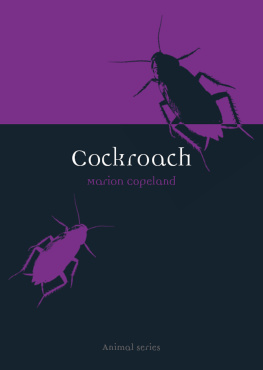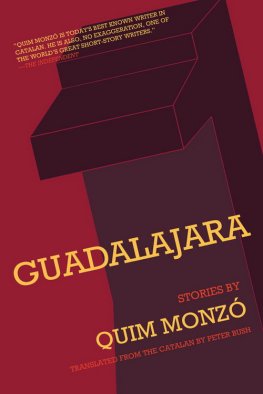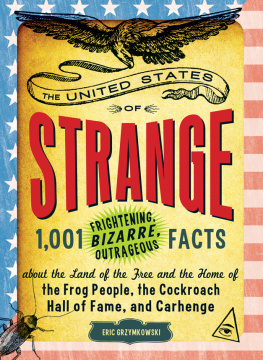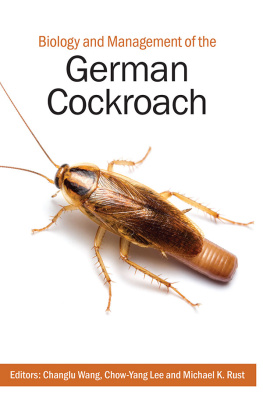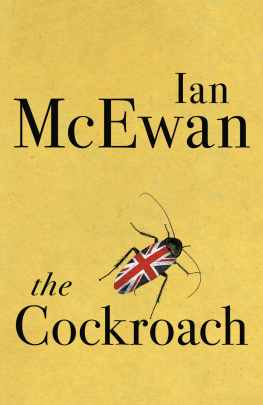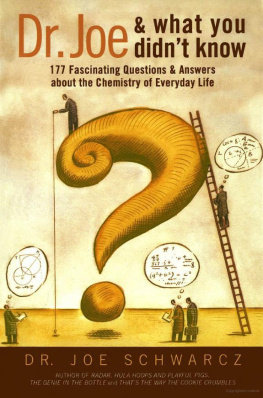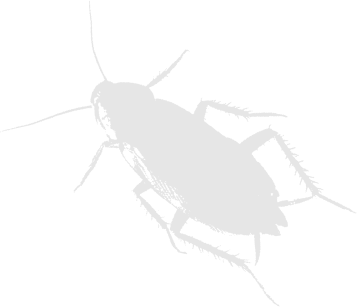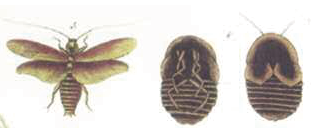Two types of cockroach, from the first major work of American natural history, published in 1747.
Introduction
The cockroach could not have scuttled along, almost unchanged, for over three hundred million years some two hundred and ninety-nine million before man evolved unless it was doing something right. It would be fascinating as well as instructive to have access to the cockroachs own record of its life on earth, to know how it survived when other species became extinct, to know its point of view on evolution and species dominance over the millennia. Such chronicles would provide, as Sue Hubbell has said, a very long view indeed. Perhaps they would radically alter our perceptions of the dinosaurs span and importance not to mention of our own development and significance.
The late Stephen Jay Gould points out in his Introduction to The Book of Life that the human narrative has virtually ignored the fact that invertebrates like the cockroach have continued to evolve ever since their appearance. Ninety per cent of all animal species on Earth today are arthropods. He warns that ignoring the history of such ancient, persistent life forms, pretending as we tend to that the twig of vertebrates, only 40,000 life forms strong, is the whole story, results in a seriously skewed account... Moreover, the bias thus introduced is the worst and most harmful of all our conventional mistakes about the history of our planet the arrogant notion that evolution has a predictable direction As one well-known cockroach remarked:
i do not see why men
should be so proud
insects have the more
ancient lineage
according to the scientists
insects were insects
when man was only
a burbling whatsit
The cockroach chronicles will tell us that, throughout all these eons, the dominant visible life form has been and remains, if not the roach itself, certainly the insect.
Although the writings of naturalists and travellers record many cockroach encounters, attempts to chronicle the cock-roachs intellectual and emotional life have been made only within the last century. In commenting on the effectiveness of the writings of John Crompton in bringing to life little-understood creatures like The Hunting Wasp, editor Stephen Bodio comments on the usefulness, even in so-called scientific accounts, of anthropomorphizing. Rather than seeing it as a sin, Bodio discusses anthropomorphizing as metaphor, a way of making the insects way of life, as weird as that of SigourneyWeavers Aliens, comprehensible to the receptive human reader. Thus he places the best naturalist writers, including Crompton, but one can add many others, beginning with Darwin himself, among those
Two cockroaches clearly reading their own history. | 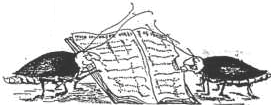
|
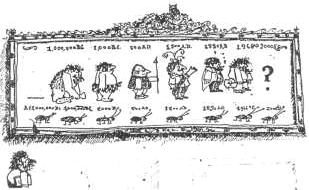
| The comparative evolutionary history of the ancient and enduring cockroach and the relative newcomer, as shown in a Lippman cartoon |
writers whose originality and sympathy have given us glimpses into the umwelt, the world view, of creatures other than our own kind, with the Kipling of the wonderful Mother Hive story, with T. H. Whites ants and geese and goshawks and badgers.
Taking Bodios lead, we will find most, although certainly not all, of the best insights into the cockroach in the evocations of artists who assume the cockroach is both sentient and intelligent and who therefore create cockroach characters, anthropomorphic or not, who tell their own story. Such works succeed by not just telling but showing the reader how cockroaches view the world, allowing them to participate in that world through the use of our imaginative faculties.Kafka (18831924) and American writer and journalist Don Marquis (18781937), created equally memorable protagonists. Perhaps the most important thing about Kafkas Gregor Samsa (who is transformed into a nameless bug that most readers assume is a cockroach) and Marquiss vers libre poet archy is that each is allowed to tell his own story, giving us the cockroach point of view. The only fly in that ointment was that each had been human before metamorphosis in one case and reincarnation in the other transformed them into roach Gregor and cockroach poet archy.
The Animorphs jacket shows Marco going through a morph from boy to cockroach. | 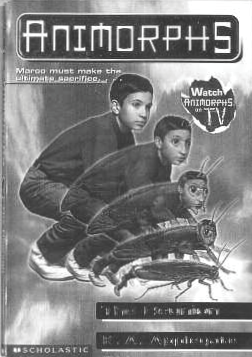
|
A more radical step occurred when contemporary novelists like Marc Estrin, Donald Harington and Daniel Evan Weiss made unadulterated cockroaches the protagonists in their own life stories. Before that happened, Howard Ensign Evans, an entomologist, produced an essay, The Intellectual and Emotional World of the Cockroach, that suggests the sentience and complexity of the cockroach. The insect has no need to borrow either intelligence or emotional depth from humans, having by far the older wisdom and soul.
Since Evans, entomologists have developed the field of cultural entomology, the study of the involvement of insects in human food, literature, art, and music, which recognizes that the insect has been and is currently involved in just about every aspect of life in every human culture. More recently still, scholars in the humanities (and the sciences) became sufficiently biocentric to acknowledge that fictional cockroach chronicles like Marquiss

